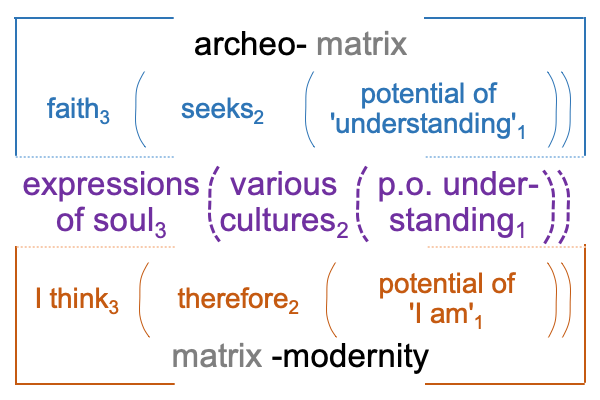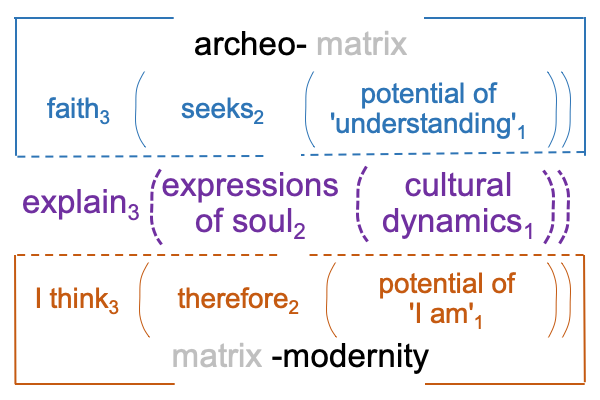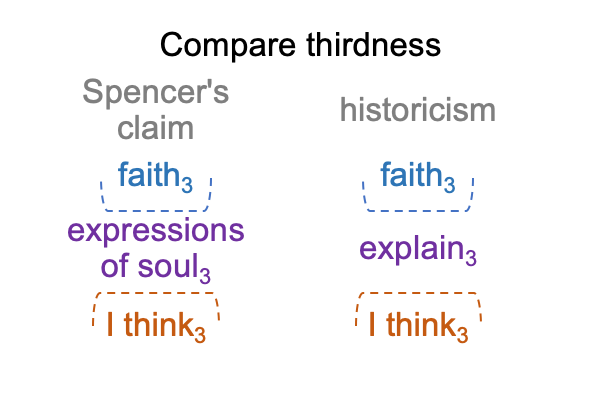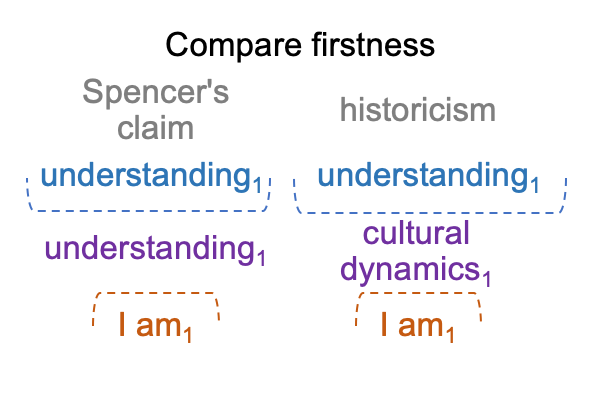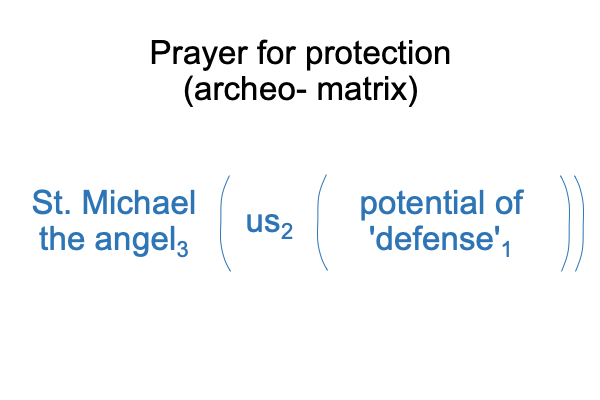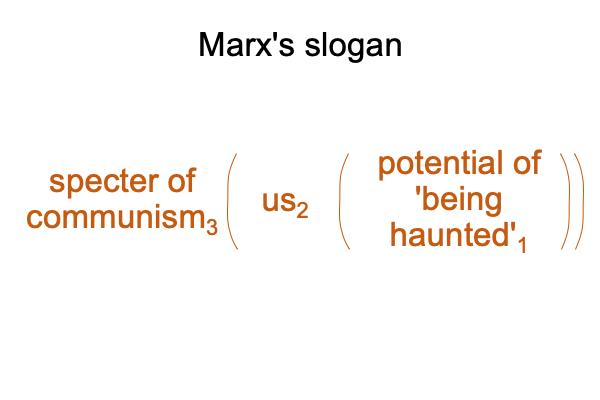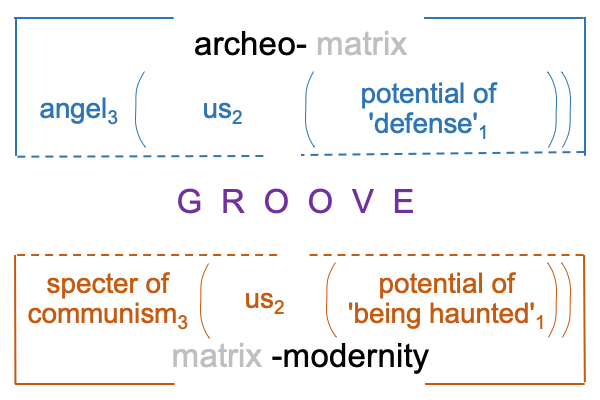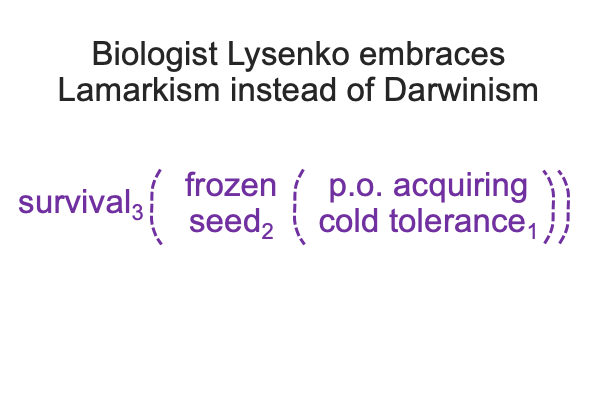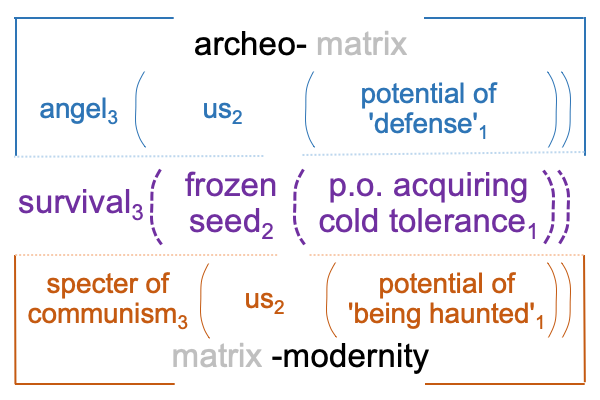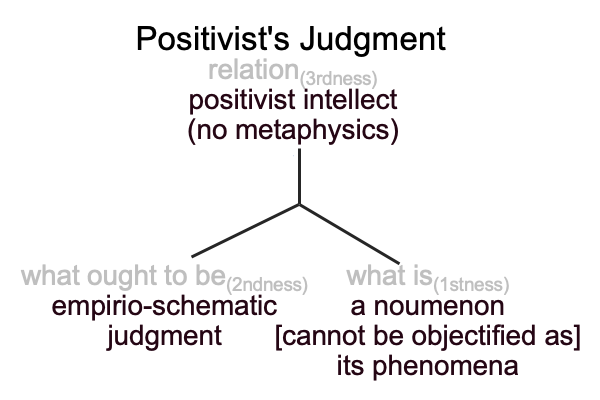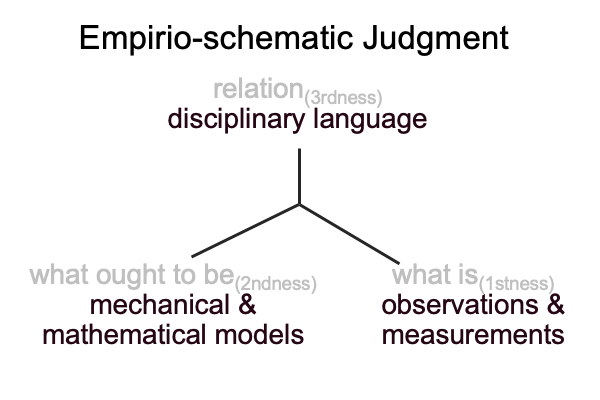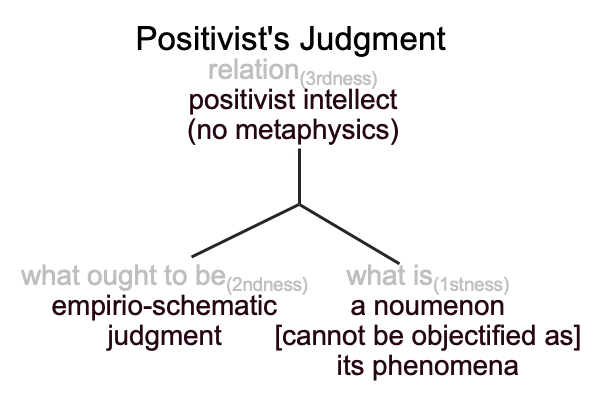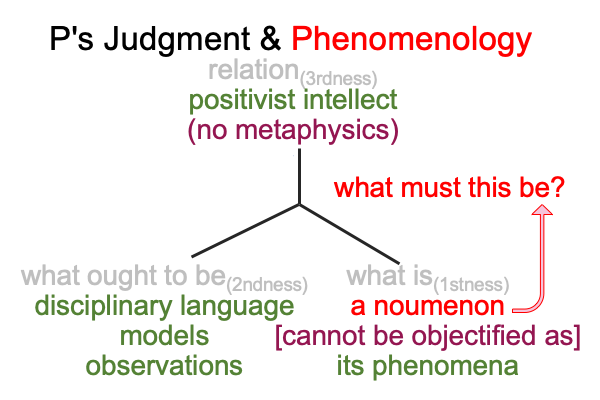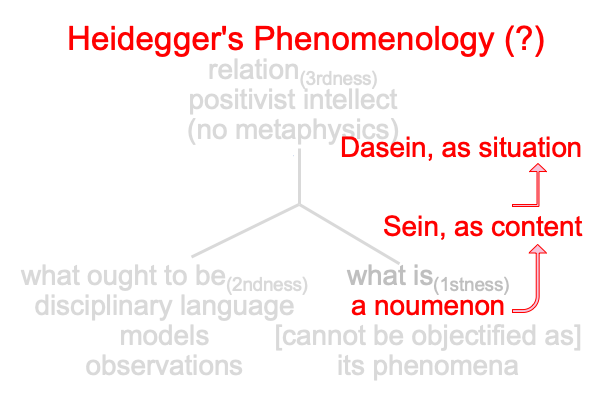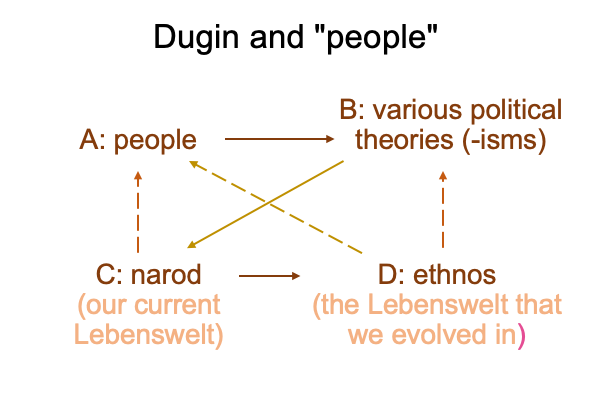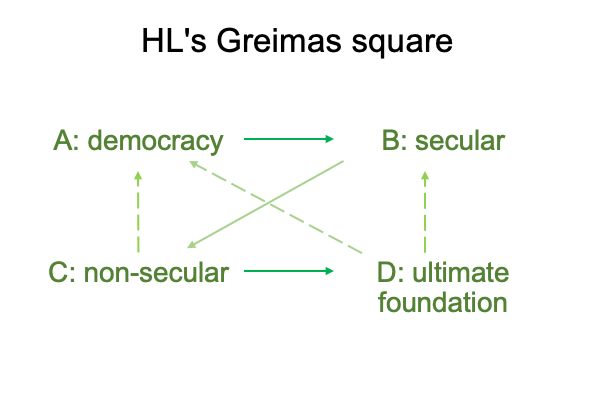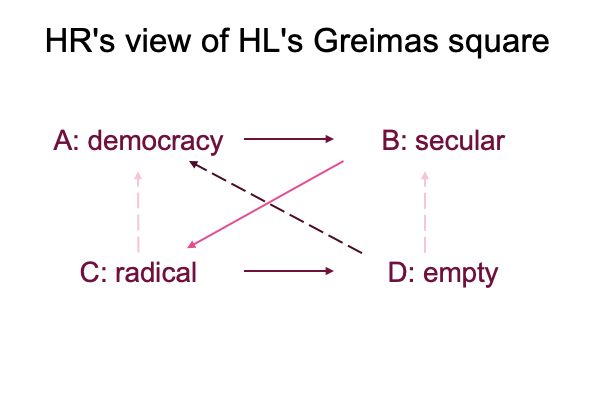Looking at Michael Millerman’s Chapter (2022) “…On Strauss and Dugin” (Part 4 of 10)
0070 Task one seeks to dismantle archeomodernity.
What is archeomodernity?
Why does Dugin want to dismantle it?
0071 Well, given Dugin’s concrete directions, ably translated by Millerman, archeomodernity seems to be a cognitive space that is trapping contemporary Russians. Liberation from archeomodernity opens the possibility of Russian philosophy.
0072 So, archeomodernity must be a trap.
How can I explain the purely relational nature of this trap?
I have found an example of such a trap in my intellectual wanderings through the vast goofiness of the internet. I will not say where. But, I will say that if you, the intrepid truly postmodern intellectual, post or publish a paper using the category-based nested form (or other triadic relations), please e-mail a notification to raziemah@reagan.com.
Perhaps, a new journal is called for.
0073 The story of the trap goes like this:
At the start of the middle ages in the West, Anselm coins a slogan that is repeated to this day. Faith seeks understanding.
At the start of the modern era, Descartes coins another slogan. I think, therefore, I am.
I associate Anselm’s premodern slogan to “archeo-“.
I associate Descartes’ slogan to “-modernity”.
0074 So, how does archeomodernity constitute a trap?
How can I portray this trap?
First, I render each slogan as a nested form.
0075 For archeo- Anselm, the normal context is faith3. The actuality is seeks2. The potential is understanding1.
Here is a picture.
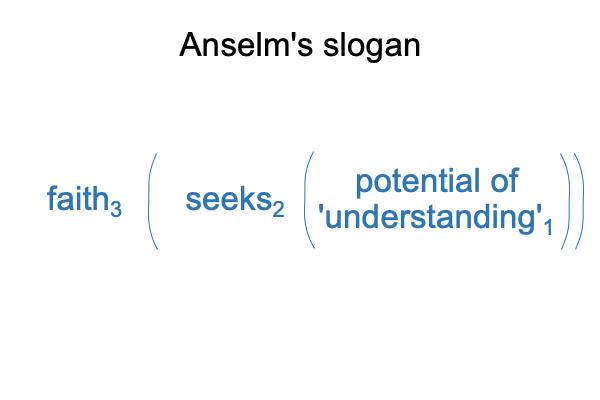
0076 For -modern Descartes, the normal context is I think3. The actuality is therefore2. The potential is I am1.
Here is a picture.
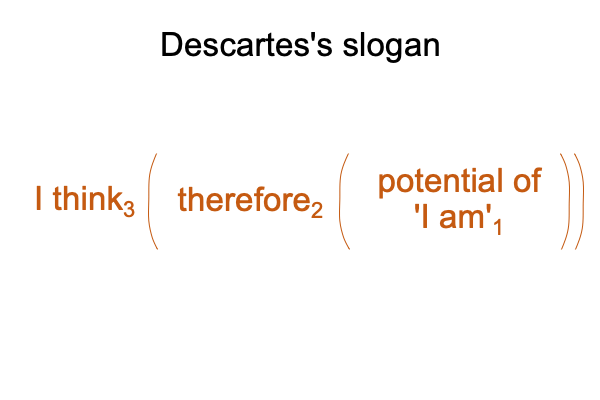
0077 Now I ask, “Does Descartes’ slogan situate Anselm’s slogan or visa versa?”
The answer is no.
Do these two nested forms constitute a single, mysterious intersection, as described in the chapter on message in Razie Mah’s e-book, How To Define the Word “Religion” (available at smashwords and other e-book venues)?
The answer is no.
0078 Are there any other options?
Here, Dugin’s impression that archeomodernity is a trap comes into play. Biological (especially, cellular) systems are full of traps. They are called “receptors”. Receptors typically consist in proteins that are folded in such a fashion that a substrate is attracted and held in place.
So, I picture the archeo- side of a matrix and the -modern side of a matrix as forming a groove.
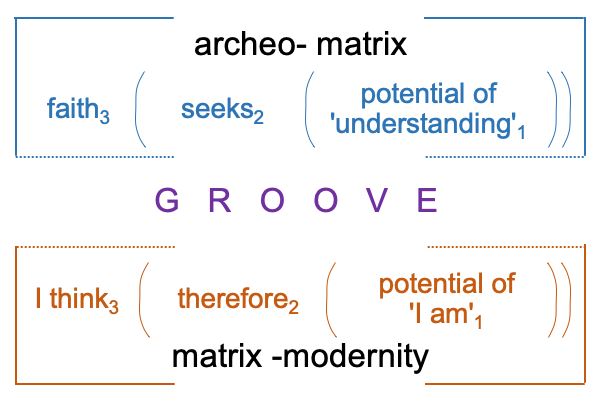
0079 What goes into the groove?
Nested forms, of course.Nested forms may be attracted to the normal context3 and the potential1 elements on each side of the groove. The stronger the attraction to both sides, the stronger the binding and the better the fit. Archeomodernity traps ideas that fit its groove.

